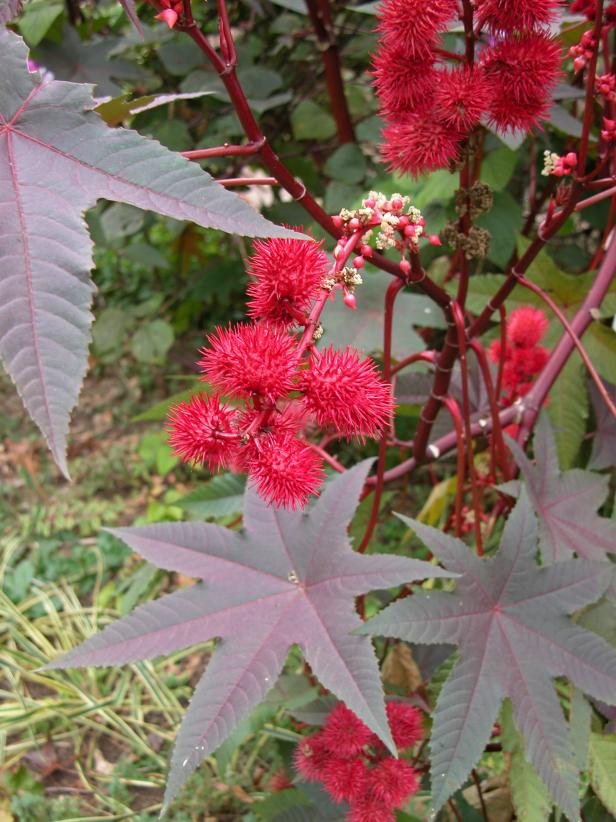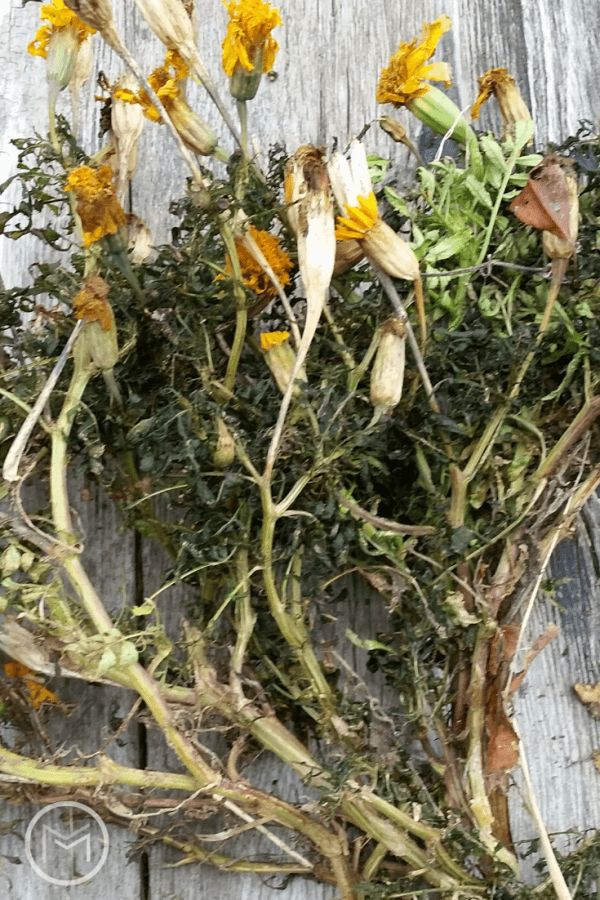This time around, we shall cover How To Plant Marigold Seeds In Container. Obviously, there is a great deal of information on How To Plant Marigold Seeds In Cups on the Internet. The fast rise of social media facilitates our ability to acquire knowledge.
Learn About Morning Glories-related material is also connected to How to grow marigolds and How To Plant Marigold Seeds In Cups. As for further searchable items pertaining to How To Grow Marigold From Dried Flowers, they will likewise have anything to do with Starting Marigolds in the House.

37 Interesting Facts How To Plant Marigold Seeds In Container | Wikijunior:The Little Gardener/Morning Glory
- Morning glories [ edit source ] Morning glories are a flower that comes in several colors. Morning glories take at least 50-70 days to grow fully before they bloom. They got their name because their petals open in the cool of the morning, and even close when it gets too hot! Directions [ edit source ] With your Morning glory seeds and all of your tools ready, it is time to plant and grow some Morning glories! A Morning glory seed. Step 1 [ edit source ] First, you have to separate and count the seeds that you want to plant. Morning glory seeds are small, but you should be able to separate them with your hands. - Source: Internet
- Marigold seeds should be planted during spring once the frost period has passed. You can start planting marigold seeds indoors eight weeks before the final frost. The seeds should germinate in the soil for four to fourteen days, as long as the temperature is within 70 to 75 degrees Fahrenheit. - Source: Internet
- Next, dig holes at least 8 to 10 inches apart (this guideline may vary based on your species) and remove your marigolds from their containers and untangle their roots. Place each marigold into your planting hole and fill each crevice with soil until it reaches the base of its stem. Press the soil with your hands firmly, forming an even surface on top. Lastly, water to a 4-inch depth. Once established, your marigolds will multiply, even if you leave them unattended. - Source: Internet
- B. SOW. Drop at least 2-3 seeds into the pot making sure they have ample space in between. Cover them lightly with some soil at least 1-2mm deep. Water the pot very lightly to ensure good seed–to-mix contact. - Source: Internet
- Having marigolds around your tomatoes gives a strong aroma that can keep hornworms away. Hornworms are known destroyers of tomatoes. Marigolds also attract wasps. Wasps are pollinators that lay eggs on hornworms, and once the wasp eggs hatch, they feed off the hornworms. - Source: Internet
- Marigolds are great in a children’s garden because they can get involved in all aspects of growing the flowers. They will be able to sow the seeds, pot them on and plant them out. Once they are out in the garden, they will also require regular deadheading to keep the growth coming. - Source: Internet
- Marigolds are an extremely resilient flower and suitable for both borders and container planting. In borders, marigolds will only need watering during hot spells. Otherwise, they should be ok for periods of up to a week. Ensure that you water at the base of the plant. - Source: Internet
- Lay the paper towel down on a clean surface. Hold the bloom base and pull off the petals and leaves. The long rods inside called achenes have seeds attached to them. - Source: Internet
- Marigolds don’t need that long to germinate at all and don’t require daylight at this early stage. You should start to see the seeds come through within 10 days if the conditions are right. Once the seedlings appear, simply move to a spot where they will be able to get get around 6 hours of light each day. - Source: Internet
- Remember that most signs of marigold distress—like wilting, decay, or white spots—are caused by fungal spores, which is why air flow and correct watering practices are critical. To mitigate the infection, remove impacted plant materials, which can limit the spread of disease, Groft says. If all else fails, amend your soil with compost; add grit and sand to loosen the earth if you’re working with heavy clay soil. - Source: Internet
- Marigold plants commonly self-seed in the garden. Self-seeding plants drop seeds onto the soil at the end of the season that may germinate and grow without help the following season. Choose a position where new plants will be welcome. If you do not want marigolds to become established in your garden, deadhead plants before they can drop seed or grow them in containers. - Source: Internet
- Marigold seeds do not need sunlight at this stage; simply setting your container in a warm area will make them to sprout within four to five days after planting. Then, you can “remove the plastic and move the container to a location that gets four or five hours of light each day,” Groft says, advising to “keep the potting mix moist but not sopping,” which prevents damping-off fungus. When your seedlings start showing new leaves, it’s time to transplant your blooms outdoors. - Source: Internet
- Sow seeds directly in the garden 5mm deep and 20-40cm apart. Keep soil moist but never wet or dry. Seeds should germinate in around 4-10 days at a soil temperature of 24-28°C. Young seedlings will need protection from pests, pets and weather until they are established. - Source: Internet
- To further nourish your marigolds, water them regularly, especially when they are young. Groft cautions to never leave marigolds in dry soil for more than a few days. During periods of extreme heat, it’s best to water new plants daily. However, once established, “marigolds will be more drought-tolerant, but will still bloom best if watered weekly,” he says. - Source: Internet
- Cover the seed with soil. Step 4 [ edit source ] Drop 4 seeds in the hole! Then, take a pinch of soil and fill the hole. Again, gently press down on the soil. - Source: Internet
- A. DEADHEADING AND PEST MANAGEMENT. “Deadheading” is a cultivating process in which you snip off dead blossoms from flowering plants. While not strictly necessary, deadheading your marigolds will help prompt the plant to produce new flowers. - Source: Internet
- Store the seeds in a paper envelope during the winter. This step is necessary to keep the seeds dry. Placing them in plastic will retain moisture and make the seeds go bad. Put a label on the envelope so that you know what’s inside it. Use separate envelopes if you have more seeds to dry. - Source: Internet
- Marigolds, a staple bloom of Mexican and Indian cultures, can grow anywhere from 5 inches to 4 feet tall, depending on the species you pick. A plant first cultivated by the Aztecs, these blossoms are regularly woven into festivals, like Mexico’s Day of the Dead and India’s Dussehra and Diwali. And for iterations rich in orange and yellow carotenoids, marigolds provide a natural alternative to fabric dye and food coloring. - Source: Internet
- A. SOIL PREPARATION Empty the soil bag to the very environmentally friendly coconut pot. Don’t forget to leave about a quarter of an inch or so of empty space in between the surface of the soil and rim of the pot to ensure proper growth. Press the mixture slightly to eliminate stubborn air pockets. Dampen the mixture thoroughly with water so it’s ready to provide the right environment for seeds to germinate. - Source: Internet
- Marigolds can be sowed directly into the ground where they are going to grow when the risk of frost has passed. Plant the seeds once the soil has warmed up approximately 1 inch apart and 1 inch deep in the ground. Ensure that it is a sunny position. - Source: Internet
- You should harvest marigold seeds once the petals become dry and the bloom base turns brown. Marigolds are edible, and you can add flowers and leaves to salad dishes. You can keep them and save them for snacks after harvesting seeds. Here are the tools you need: - Source: Internet
- When growing your marigolds indoors, they can be started from seed, propagated from an established plant, or purchased live at many garden centers. We prefer to sprout from seed or propagate from a stem cutting, as it results in plants that are adapted to your growing conditions and limit the chances that you accidentally bring home pests.) - Source: Internet
- Fill your pot or planter with Scotts Osmocote® Premium Potting Mix. Gently remove the marigold from the nursery pot and tease the roots lightly if they are compact or seperate the plants if they are growing in punnets. Plant the marigolds - as per the labels recommended spacing - into the potting mix and backfill around the plant. Water in well and top the soil with mulch to retain moisture. - Source: Internet
- Deadhead marigold flowers regularly during the growing season. Using sharp secateurs or snips cut fading or dead flowers off just above a set of leaves. Removing old flowers regularly will encourage plants to produce more flowers. Learn more about deadheading flowering plants here. - Source: Internet
- This species is shorter, reaching one foot in height at peak maturity; French marigolds prefer to spread horizontally, resulting in low, but more expansive ground cover. Their ruffled petals range from yellow and orange to brilliant red and russet. On the whole, this variety can withstand wetter conditions. - Source: Internet
- Overwatering causes distress to plants. The soil will be soggy or muddy, affecting the plant roots’ condition. Your marigold’s leaves will start to develop brown patches and will wilt. - Source: Internet
- You can plant marigold seeds indoors, about six to eight weeks before your last frost date. To start, sow seeds on the “surface of a tray or small pot filled with ordinary commercial potting soil that is lightly dampened,” says Groft. Cover the seeds with a thin layer of vermiculite and then cover the whole tray or pot with plastic, he adds. - Source: Internet
- After marigold seedlings develop a pair of true leaves, they are ready for transplant into individual containers with sterilized potting or garden soil or a further thinning so all plants are at least 2 inches apart. Using a spoon or other implement to remove each young plant keeps its root mass intact. If the plants require steadying or positioning, only the upper leaves should be gently handled. After plants are placed at the same level in the soil at which they were previously grown, they require a gentle watering to fill in any air pockets around the roots. - Source: Internet
- “Marigolds do not need supplemental fertilizer unless your soil is extremely poor,” says Groft. But, if you want to boost nutrition and support better drainage, you can always work in a layer of compost. Ultimately, the best way to maintain marigolds is by deadheading them regularly. - Source: Internet
- If you are looking to grow marigolds indoors to get some early flowering outside, you will want to start sowing approximately 50 days before the last frost date. Simply place some potting mix in a seed tray and place 2 seeds in each cube. The seeds are quite delicate so extra care should be taken – great for showing children how careful you need to be. - Source: Internet
- Growing up, I can always remember marigolds in my Grandfather’s garden. So much so that I still remember the jam jars outside the back door, full of seeds, that he had dried from the year before. Not only did this ensure that he had he same variety but on reflection, it was a very sustainable way of gardening and creating great displays. - Source: Internet
- There are several types of marigolds, and the two popular ones are French marigolds and African marigolds. These marigolds have a wide range of colors, from yellow-orange to red. Note that African marigolds grow slower. They are best planted after the frost ends. - Source: Internet
- Once you have deadheaded the dried flower, simply store in a cool dry place and this will provide you with ample seeds for next years display. This is great for children as they will end up with the same seeds as what they started off with. A perfect way to show the lifecycle of a plant. - Source: Internet
- Lack of sufficient water can kill your plant. The water will not reach the roots, and dry soil can affect the plant’s growth. If the soil cannot absorb enough water, transplant the marigold into a new soil mix. - Source: Internet
- Commonly used as a bedding or container plant, African marigolds are characterized by their bright-yellow, pom-pom flowerheads, which can become quite large. This variety begin to bloom in early summer; with proper deadheading, they will continue to blossom well into fall. One of the taller marigold varieties, mature plants can reach 3 feet. - Source: Internet
- Like most plants, marigolds are not immune to rots, blights, and mildews, including Powdery mildew, a fungal disease. A telltale sign that your marigold is experiencing this ailment? If leaves splash up from the ground with white residue, fungal spores are growing, notes Groft. But there is good news: Although it may take away from the plant’s beauty, Powdery mildew is seldom fatal. - Source: Internet
- Marigold plants can be grown in containers. If possible choose a variety that’s recommended for container growing. Use a good quality potting mix and make sure your container is large enough for mature plants; a minimum of 20 litres is recommended for marigolds. During the growing season, keep in mind that container grown plants may need additional fertiliser to encourage healthy growth. - Source: Internet
 Here are some recommendations for locating information about When To Plant Marigolds? [Inc. Seeds And Seedlings] to get you started:
- Research How Long Do Marigolds Take To Grow From Seed-related information from credible sources. This includes libraries, websites, and even journalistic professionals.
- When researching How To Plant Marigold Seeds In Cups, it is vital to be aware of the numerous sorts of electronic media sources, such as Google and YouTube. Social media networks, such as Facebook and Twitter, are also likely to include information on How to Plant and Care for Marigolds, Splashy Bedding Plants That You Can Grow in Almost Every Hardiness Zone.
Here are some recommendations for locating information about When To Plant Marigolds? [Inc. Seeds And Seedlings] to get you started:
- Research How Long Do Marigolds Take To Grow From Seed-related information from credible sources. This includes libraries, websites, and even journalistic professionals.
- When researching How To Plant Marigold Seeds In Cups, it is vital to be aware of the numerous sorts of electronic media sources, such as Google and YouTube. Social media networks, such as Facebook and Twitter, are also likely to include information on How to Plant and Care for Marigolds, Splashy Bedding Plants That You Can Grow in Almost Every Hardiness Zone.Video | How To Plant Marigold Seeds In Container
To obtain the most accurate information on How To Grow Morning Glory, it is essential to investigate the credibility of each source by reading.
This page contains multiple How Many Marigold Seeds Per Pot-related films from a variety of sources, which can expand your understanding about how to grow marigold seeds in pots. Internet is an excellent resource for getting information on a range of subjects.
## Here are some crucial aspects concerning How To Plant Sprouted Morning Glory Seeds:- How To Plant Marigold Seeds In Container
- How To Plant Marigold Seeds In Pot
- How To Grow Marigold Seeds In Pots
- How To Plant Morning Glory Seeds In A Pot
- How To Grow Marigolds In Pots
With so many websites and forums giving How To Germinate Marigold Seeds Quickly-related information, it is not difficult to locate what you want.
This is a highly unconventional method for obtaining knowledge on How to Grow Marigolds, compared to what most people are accustomed to. It permits a more in-depth examination of the content and application of information regarding Marigolds In Pots Images.
 Methods for creating aesthetically pleasing and informative presentations of Germinate Marigold Seeds Paper Towel information. They can be utilized in business and marketing environments to convey messages regarding how to plant morning glory seeds in a pot. Consequently, we additionally supply photographs regarding how to plant morning glory seeds in a pot.
Methods for creating aesthetically pleasing and informative presentations of Germinate Marigold Seeds Paper Towel information. They can be utilized in business and marketing environments to convey messages regarding how to plant morning glory seeds in a pot. Consequently, we additionally supply photographs regarding how to plant morning glory seeds in a pot.
This article concludes by providing an overview of Learn About Morning Glories. In addition, how to grow marigold seeds in pots and How to grow Ipomoea Morning Glory Plant are discussed to compare your understanding of Starting Marigolds in the House.